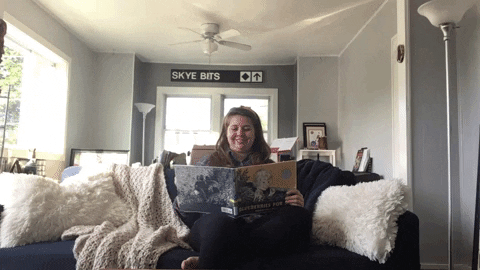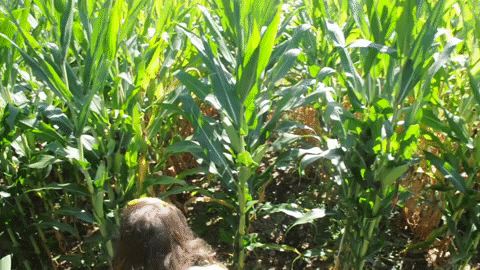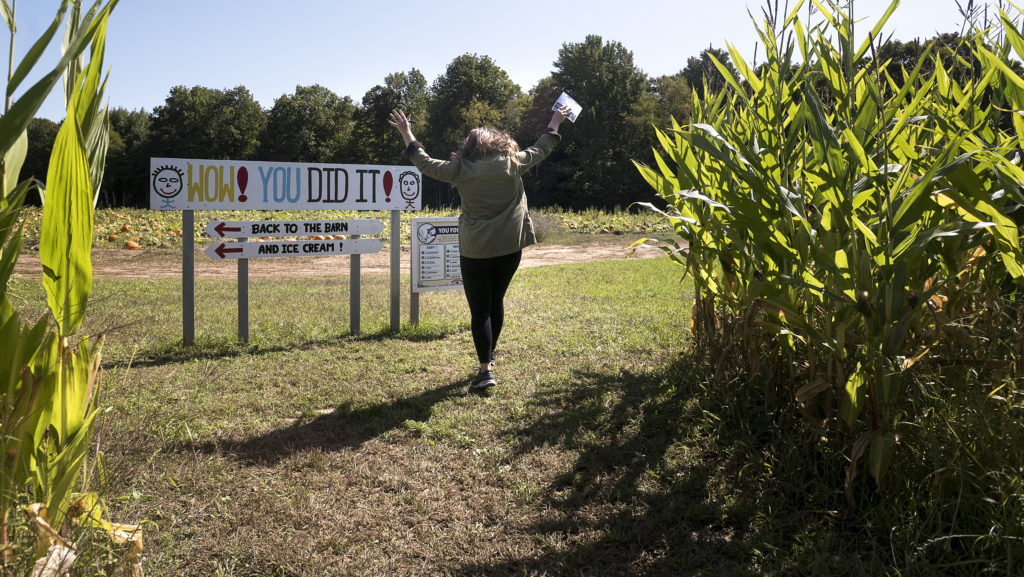I tried to escape a corn maze. Here’s how it went.
Here are my favorite fall activities: shopping for kitschy sweaters at the thrift store, crafting punny Halloween costumes and experimenting with every type of squash at the farmers market. Corn mazes generally don’t rank very high on my list of autumnal to-dos. I am embarrassingly bad at reading maps (it’s not my fault, my brain is broken). Being lost makes me anxious. This fall, though, I decided to challenge myself.

Corn mazes, otherwise (punnily) known as maize mazes, are a fall tradition — perhaps ironically, as corn crops are at their lushest in August. The history of the modern American corn maze — with its intricate aerial designs and winding trails — allegedly dates back to 1993, when Don Frantz and Adrian Fisher grew “The Amazing Maize Maze,” shaped like a stegosaurus called “Cornelius the Cobosaurus.”
At the time, the three-acre corn maze in eastern Pennsylvania seemed like a veritable vanguard in a world of easy-to-solve geometric hedge mazes. Now, come September, they’re ubiquitous.
Farmers have to consider many factors to successfully make a corn maze, like whether they have the right soil and climate, and how much time they want to devote to marketing and customer service. While some farms will hire companies like Precision Mazes and The MAiZE to cut mazes in their fields with GPS-driven tractors, other farms will design and grow their own corn mazes.
One such farm is Treworgy Family Orchards in Levant, Maine, less than half an hour away from Bangor. Each year, the family designs and lays out the corn maze over a series of months for visitors to enjoy, along with other fall activities like apple picking and pick-your-own pumpkin patches.
This year’s design was based on “Blueberries for Sal,” a classic 1948 children’s book by Maine author Robert McCloskey. The story follows a mother and her daughter, the titular Sal, as they harvest wild blueberries. A mother bear and her cub happen to be doing the same. A comedy of errors ensues. (Don’t worry, Sal and her mother both survive their encounter with wild bears.)
When viewed from above, the scattered stalks form a foraging mother bear trailed by a child carrying a blueberry pail. It is adorable, and I was determined to conquer it.
Learning to try
I wanted to be prepared before I went into the corn maze, so I researched some corn maze solving hacks.
The classic trick is the “wall follower” or “right-hand rule,” where you put your right hand on a corn maze wall as you walk and it will, apparently, lead you to the exit. Maze experts say the rule only works for simple mazes. With the twists and turns of the Treworgy Family Orchards corn maze, I definitely wasn’t going to get out that easily.

I found a few tips that I thought might come in handy. First, puzzle experts recommend solving the maze on the map before you start. Second, look for a point of reference above the treeline (cornline?) and use as a compass to keep yourself oriented. Finally, bring a pen and your map to mark where you turn along the way in case you need to backtrack.
I also went to the Bangor Public Library to pick up a copy of “Blueberries for Sal.”
Maybe it holds some secret knowledge about the challenge ahead of me, I thought. (Side note: being the only adult looking for books in the children’s section is not a great look, but I wasn’t about to explain myself to a room full of judgy toddlers.)
Reading the book didn’t provide me with any maze-solving clues, but I was struck by the fact that the story is about getting lost and finding your way again. Hopefully, my experience in the corn maze would be the same.

A trying experience
Before I entered the leafy labyrinth, I quickly penciled my escape route onto the map with stops at all six trivia stations — and, optimistically, the “Hall of Fame” at the center of the maze.
I also asked Jonathan Kenerson, CEO of Treworgy Family Orchards, if he had any more advice before we parted.
“If you’re in there for more than three hours, yell really loud and we’ll come find you,” he said.
I was off to a great start.
I found the first and second stations without a problem, but I got cocky and quickly became disoriented. I could not see over the edge of the maze, so I could not find a point of reference (solar navigation skills may have been helpful at this point, but alas). Even though I tried to mark my path as I went along, I started getting confused and marking the wrong turns. So much for my maze-solving hacks.

I tried to pick out distinguishing features in the maze — patterns that, on the aerial map, looked unique or obvious — and orient myself based on that. Sometimes, these wound up getting me more lost (turns out, you can convince your mind that a group of corn stalks looks like pretty much anything when you’re desperate), but popping out of the maze at the various clearings helped me to figure out where I was relative to the overall picture. I also got lucky a few times, finding new stations by chance that helped me reorient myself.
Reading “Blueberries for Sal” did not give me any insight to the maze itself, but it did help me with the trivia questions stationed along the way. I must confess, though: I got the last question wrong. I am not going to tell you what it is, but let’s just say I should have brushed up on my Treworgy Family Orchards facts before heading into their maze.
My tried-and-true takeaways
Navigating a corn maze is still an anxiety-inducing experience for me, but it is possible even for the most directionally-challenged maze-goers to escape if you keep your wits about you. I would recommend venturing out with a friend. My photographer and videographer, Gabor Degre, refused to help me navigate — on principle, he claimed — but it was still nice to have him there.
The unique features in a corn maze’s design are probably the most helpful to figure out where you are when you are lost. Just try to imagine the section you are in from above. Clearings are especially helpful, as are oddly-shaped details. Look at the pattern of trails around you, and see if they match up with any sections on the map.

Speaking of maps: hang tight to yours, because you will definitely need it.
Despite my navigational snafus, though, I made it to “Hall of Fame” at the center of the maze and signed my name among the other expert maze-goers. That sense of accomplishment was totally worth it.

